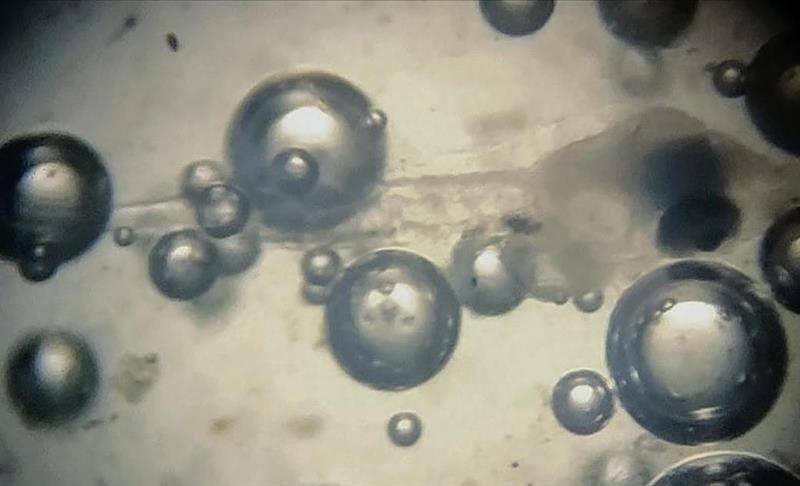According to scientists, producing green hydrogen from the hydrogen sulfide found in the Black Sea can improve environmental health by producing clean energy.
It has long been known that the nearby marine ecology is at risk from hydrogen sulfide, a hazardous substance that can be found in considerable amounts in the Black Sea’s depths. However, other scientists think it might have further ecological advantages and be used as a clean energy source equal to approximately 850 million tons of oil.
The Black Sea environment is in danger of hydrogen sulfide rising from the oxygen-poor seabed to the much more biodiverse areas closer to the surface, where it might kill marine life, due to the combined effects of climate change and growing pollution.
Some experts, such as Ibrahim Dincer, believe that these enormous quantities of hydrogen sulfide can be processed using sustainable ways to produce energy-rich hydrogen, a clean fuel that is anticipated to be essential in the shift away from fossil fuels.
Dincer, a specialist in renewable energy systems and faculty member at Ontario Technical University and Yildiz Technical University in Istanbul, claims that hydrogen, despite being highly combustible, is the lightest and most abundant substance in the universe.
Water is one of the many substances on the earth that contain hydrogen. Water molecules can be divided into their component hydrogen and oxygen using a variety of techniques. Green hydrogen is the fuel produced if the energy required for this is generated from clean, renewable sources, such as solar or wind.
Dincer clarified that processes like electrolysis, thermal, catalytic, and photocatalytic separation can be utilized to create the fuel from hydrogen sulfide, which comprises sulfur in addition to hydrogen. He continued by saying that an energy source had to be produced without the usage of fossil fuels or the release of greenhouse gases like carbon in order to qualify as green.
“Using these techniques, hydrogen sulfide may be separated to produce sulfur and hydrogen separately. These emission-free initiatives are essential to the Black Sea’s wellbeing. You will restore the Black Sea, strengthen the ecology, and boost biodiversity; this is an unrivaled chance and opportunity,” he declared.
We calculated the potential yields and found that separating it by electrolysis might produce 4.3 billion tons of sulfur and 270 million tons of green hydrogen. The world currently uses 118 million tons of hydrogen and 85–90 million tons of sulfur annually,” he stated.
Dincer, who is also the president of the Hydrogen Technologies Association, the coordinator of the Energy Working Group at the Turkish Academy of Sciences (TUBA), and a member of the executive board of the Turkish Energy, Nuclear, and Mining Research Institute (TENMAK), stated that the Black Sea is able to supply the world with sulfur for almost 50 years.
In addition to these final goods, he claimed, this technique will help restore the Black Sea and generate economic revenue and added value.
“This is a very significant issue because a lot of people still don’t know about it and don’t understand this change,” he stated, emphasizing the necessity of modifying technology for the hydrogen age.
In 1996, the nations that signed the Bucharest Convention in 1992, including Turkey, proclaimed October 31 to be “International Black Sea Day” in an effort to prevent contamination of the Black Sea.
Fewer but more
Anadolu was informed by Adnan Sozen, a professor at Gazi University in the Turkish city of Ankara, that the Black Sea held a store of roughly 4.5 billion tons of hydrogen sulfide, and that extracting green hydrogen from this reserve would be extremely valuable.
Sozen, a member of the Faculty of Energy Systems Engineering at Gazi University, noted that less energy is needed to produce hydrogen from hydrogen sulfide than it is to produce water.
“To produce 1 mole of hydrogen from water, we need 66 watt hours of energy, whereas we need 20 watt hours to produce hydrogen from hydrogen sulfide,” he said.
“When processing 100 kilograms of hydrogen sulfide per hour, you can produce 5.8 kilograms of hydrogen, and the required energy amount is 75 kilowatt hours,” he stated.
“The potential of the Black Sea can be used to produce hydrogen, which has the same energy as 851 million tons of oil and 766 million tons of natural gas. A sizable energy source exists.”
“There are not many living creatures in areas with hydrogen sulfide,” he added, underscoring the great benefits that generating green hydrogen from hydrogen sulfide in the Black Sea would have for the marine ecosystem.Here, the only problem is to securely separate the sulfur that is emitted when hydrogen sulfide is converted to hydrogen. Although it can be widely utilized in business, it must be preserved.”
Postponing surface approach
According to Ali Alkan, the deputy director of the Institute of Marine Sciences and Technology at the Karadeniz Technical University in the Black Sea province of Trabzon, Turkey, the concentration of hydrogen sulfide in the sea is dependent on depth and is found below an average of 150 meters (about 490 feet) below the surface, varying by region.
Alkan stated that in theory, the sea’s approach to the surface might be delayed if a significant quantity of hydrogen sulfide were removed.
“The low oxygen content beneath the first 150 meters of the Black Sea is a problem, in addition to the presence of hydrogen sulfide,” he stated.
He declared, “We cannot use the sea from the point where the layer without oxygen begins,” and that it would take a major undertaking to remove any portion of the hydrogen sulfide in the water.
“At this stage, it seems a bit utopian to me,” he said.











